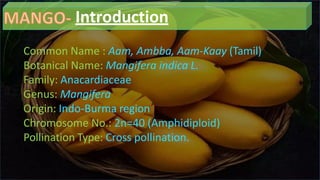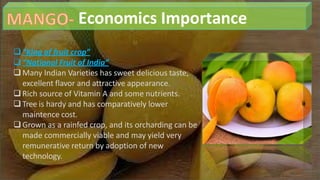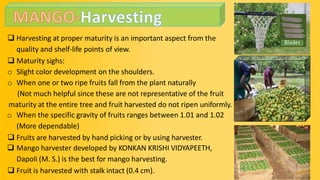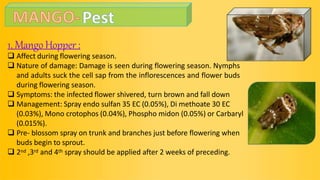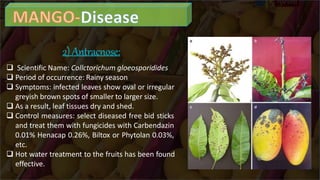The document provides an extensive overview of mango cultivation, highlighting its economic significance, origin, and essential cultivation practices including soil, climate, planting techniques, and pest management. It discusses various mango varieties, their characteristics, and propagation methods, as well as critical factors such as irrigation, fertilization, and harvesting practices that ensure optimal yield. Additionally, it addresses common pests and diseases affecting mango trees along with management strategies to mitigate their impact.


